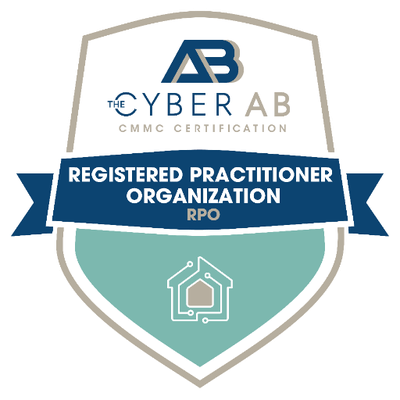Our privacy policy is located here.
Regulations and Compliance
See how risk-based Managed Detection & Response can help you with compliance — regardless of your industry
NYDFS Security Regulation FAQ
A CONVERSATION WITH RON PELLETIER, FOUNDER and CHIEF CUSTOMER OFFICER, PONDURANCE, AND RICHARD BORDEN, COUNSEL, WILLKIE FARR & GALLAGHER LLP
- The cyber regulation standards and if there are any commonalities
- What you need to do to meet SEC requirements
- The difference between privacy regulations and information security regulations
- What are the Department of Labor (DOL) guidelines, and how does it apply to cybersecurity
- How a cybersecurity provider can help you meet new security regulations
Insurance and Legal Partners
Pondurance works with legal and insurance firms, brokers and agents to help their clients improve their cybersecurity posture and reduce cybersecurity risks.
Reach out to us to learn more partners@pondurance.com
If you suspect you have an active breach, please contact us at 888-385-1720.

Keep Up With the Latest Blogs on Compliance and Regulations
Webinar
Reducing the Costs To Comply With CMMC

Successfully Navigating Through CMMC: What You Need to Know

Achieving CMMC 2.0 Compliance

Are you processing controlled unclassified information for Department of Defense clients and required to meet Defense Federal Acquisition Regulation Supplement requirements? Pondurance is here to help you achieve CMMC 2.0 compliance and better understand the gaps in your processes, capabilities, and practices.
Are You Looking for Specfic HIPAA Regulations?
Additional Resources
PCI DSS Compliance Made Simple by Pondurance
As part of Pondurance’s cyber risk and regulatory compliance assessment services, we offer a focused review of your IT systems environment to identify areas of risk and maturity as they relate to Payment Card Industry Data Security Standard (PCI DSS) compliance. READ HERE
NIST Incident Response
The realm of cybersecurity is vast and constantly expanding with technological advances. One key standard that governs this realm is the National Institute of Standards and Technology (NIST), which provides a set of guidelines to manage cybersecurity risks expertly. A key part of these NIST guidelines is incident response. Here, we delve deep into relating these essential elements of cybersecurity and shed light on how organizations can navigate breaches while maintaining compliance.
NIST Incident Response is a detailed, proactive approach set forth by the National Institute of Standards and Technology to manage and respond to cybersecurity incidents effectively. It is not merely a process, but rather a lifecycle that dictates all stages of responding to, mitigating, and recovering from a breach or attack. The NIST computer security incident handling guide meticulously maps this lifecycle while shedding light on crucial methods to handle a security incident.
When an organization faces a cybersecurity incident, the initial reaction can often set the tone for the entire recovery process. The NIST incident response plan comes into play in this delicate phase, providing a robust framework for both identifying and classifying incidents. It lays out step-by-step procedures that need to be followed, ensuring all potential vulnerabilities are addressed immediately and effectively.
The NIST incident response lifecycle consists of four different phases: Preparation, Detection and Analysis, Containment, Eradication, and Recovery, and Post-Incident Activity. Each of these phases tackles a different aspect of incident response. From being prepared and aware of possible threats, through prompt detection and accurate analysis of the incident, progressing to containment and eradication of the threat, and finally, in recovery and analyzing activities post the incident for further risk mitigation actions.
The NIST incident response guide is a goldmine of valuable information, bringing together different aspects of incident response while providing clear guidelines for an effective plan. In essence, it serves as a roadmap for organizations to follow and remain compliant with NIST regulations and standards. Moreover, it empowers organizations by providing the necessary tools and knowledge to create a sound cybersecurity infrastructure.
Achieving compliance with NIST standards and efficiently handling cybersecurity incidents is undoubtedly a significant task for any organization. This is where Pondurance can provide assistance. As an experienced cybersecurity partner, Pondurance can help organizations navigate cyberspace’s tumultuous waters, ensuring safety, security, and regulatory compliance. By integrating NIST incident response models into your security measures, Pondurance assists in preparing for threats, identifying breaches promptly, and initiating the necessary preventive measures.
Every organization’s primary goal should be to secure its digital assets and ensure the smooth functioning of its daily operations without cyber threats looming overhead. Endorsing the NIST incident response lifecycle and incorporating it into your management practices can significantly reinforce your cyber defenses. Coupling this with the expert guidance of a cybersecurity partner such as Pondurance creates a robust, formidable shield against cyber threats.
NIST Incident Response Playbook
Navigating the complexities of cybersecurity breaches prove a daunting task for many organizations, especially when trying to ensure compliance with the National Institute of Standards and Technology (NIST). A key strategy in this mission is to implement a robust NIST incident response playbook. This not only provides a concrete plan of action for cybersecurity incidents but also aligns with Pondurance’s commitment to arming organizations with the knowledge and tools necessary to combat threats effectively.
Understanding the NIST incident response playbook involves delving into a set of predetermined procedural guidelines. These are profoundly explicit in outlining response procedures for cybersecurity incidents. As a comprehensive guide, it offers detailed instructions on identifying threats, managing the aftermath, and performing a detailed forensic examination to prevent recurrences. It is a resilient, well-structured roadmap that underlines the steps to mitigate and reduce the impacts of cybersecurity incidents.
The importance of a NIST incident response playbook is highlighted further when compared to the Cybersecurity and Infrastructure Security Agency’s (CISA) own offering, the CISA incident response playbook. Both are valuable resources, but the NIST version shines in its versatile adaptability. It is designed with the flexibility to be tailored to the specific needs of each organization, irrespective of their industry or size. The CISA playbook, on the other hand, focuses more on general cyber threats, making it an integral but less customized tool.
Citing a few cyber security playbook examples would illustrate a better understanding of these handy toolkits. For instance, they typically start by detailing the roles and responsibilities of the team in handling an incident. This is followed by steps on threat identification, segmentation of the infected network, and corrective steps to neutralize the threat. Post-incident activities include a thorough forensic analysis to understand the cause and extent of the breach and after-action reviews to incorporate lessons learned into future versions of the playbook.
For organizations ready to embrace this proactive stance, templates such as the NIST incident response playbook template are readily available. These templates provide a head start in creating a personalized incident response strategy. Customization to the organizations’ specific needs along with regular updating and testing is important in ensuring its effectiveness. In conclusion, utilizing a NIST incident response playbook provides an established, systematic approach to dealing with the potentially chaotic aftermath of a cybersecurity breach.
NIST Incident Response Lifecycle
The National Institute of Standards and Technology (NIST) plays a pivotal role in the world of cybersecurity, providing benchmarks and comprehensive guidelines for managing security incidents. A cyber incident can take many forms – from a simple phishing attack to a wide-scale ransomware attack, crippling an organization’s infrastructure. Being equipped with an effective response plan to tackle such situations is crucial in minimizing potential damage. The NIST incident response plan is a comprehensive approach that assists organizations in managing such incidents effectively.
Delving into the NIST Incident Response Life Cycle, it broadly comprises four stages – Preparation, Detection and Analysis, Containment, Eradication, and Recovery, and finally Post-incident Activity. Each stage carries a level of importance that cannot be understated, contributing towards an overall efficient and swift resolution to security breaches.
In the preparation phase, organizations ensure they have an efficient incident response infrastructure in place in case an incident occurs. This involves in-depth training of employees, establishing robust policies, and ensuring sufficient technical and logistical capabilities to meet the threat head-on.
The stage of detection and analysis involves monitoring systems/information sources to detect potential security incidents. Different types of methodologies can be utilized for this purpose such as Intrusion Detection Systems (IDS), log-monitoring software, or antivirus software. Once a potential security incident is detected, it is then analyzed to understand its nature and severity.
In the containment, eradication, and recovery phase, the response team takes necessary steps to prevent further damage to systems and infrastructure. This includes isolating affected systems, removing the threat, and restoring services to normal operations.
Finally, the Post-incident Activity phase involves learning from the security incident and improving the entire incident response plan as a result, making sure similar future breaches can be prevented or at the least, mitigated more effectively.
To exemplify, consider a NIST Incident Response example in cyber security where an enterprise unknowingly falls victim to a ransomware attack. The process to tackle this involves all stages of the NIST Incident Response Life Cycle, where the ransomware is first detected, isolated, removed, and recovery process initiated followed by a thorough post-incident analysis to prevent recurring attacks.
It is crucial to remember that efficient incident response is not a single-step process but a robust lifecycle that demands continuous monitoring, regulation, and improvements. Organizations can count on guidance from NIST, in tandem with firms like Pondurance that specializes in threat hunting, cybersecurity, incident response providing with an unassailable breadth and depth of security, ensuring the highest level of defense.
NIST Incident Response Steps
Understanding the comprehensive application of the National Institute of Standards and Technology (NIST) incident response steps becomes indispensable in a world continually threatened by cybersecurity challenges. In the face of these incipient issues, organizations need a comprehensive approach to manage and mitigate experiences of cyber threats and attacks.
Navigating the specifics of NIST incident response steps in cyber security embeds within an organization’s operation, a robust protocol that provides adequate safeguards and contingency measures to protect and safeguard critical infrastructure. These steps, backed by NIST standards, ensure that IT teams can promptly detect, respond to, and manage their recovery from cyber incidents systematically.
The NIST incident response plan template offers a procedural approach that is both proactive and reactive, thus guiding organizations in readiness, handling, and recovery from any form of cybersecurity breach or attack. The template presents a framework formulated into 7 phases of incident response, each carefully orchestrated to give organizations a standard operating procedure that efficiently and effectively addresses incidents.
These NIST-defined steps commence with preparation, detection, and analysis, which provides a roadmap to the organization on how to identify, analyze and document potential cybersecurity events. Following these steps helps to streamline procedures and improve communication among personnel during the occurrence of a cybersecurity incident.
The next stages involve containment, eradication, and recovery. During these phases, teams tackle how to prevent the spread of the incident, remove the threat from compromised systems, and restore normal operations. Moreover, these stages involve the collection and analysis of data to ensure that the same breach does not occur in the future.
The final stage, post-incident activity, focuses on learning and refining incident response activities. This phase is essential in analyzing the efficiency of the response, enhancing security measures and adjusting incident response plans to better mitigate future risks.
In those willing to dig deeper, the NIST official website facilitates these incident response steps in cyber security via numerous resources in a readily downloadable format. For example, the “NIST incident response steps pdf” provides in-depth coverage of these response steps.
Pondurance, as a recognized cybersecurity partner, aligns with NIST incident response steps to ensure organizations have the best protection against cyber threats. By combining sophisticated technology, advanced analytics, and security experts’ experience, Pondurance supports companies in building, implementing, and managing an evolving landscape of cyber threats while adhering to NIST standards.
NIST Incident Response Framework
In the digital landscape, organizations find themselves entrenched in a never-ending battle to safeguard their sensitive data. Amidst this cybersecurity warfare, anticipating and successfully mitigating security incidents plays a paramount role. The first line of defense in this regard is a robust Incident Response (IR) framework. A prime example of this would be the National Institute of Standards and Technology’s (NIST) Incident Response Framework.
NIST Scenario Response Framework, or SP 800-61r2 as it’s cited technically, delineates comprehensive and pragmatic measures for an effective breach response. Flooded with meticulous guidelines from preparation, detection, containment, eradication, to recovery, and post-incident analysis, this framework is a prophylactic force against a security breach. By adhering to NIST compliance mandates, organizations not only stand resilient against cyber adversities but also exhibit a sound culture of security.
However, formulating and maintaining NIST compliant Incident Response playbooks might be disconcerting for many organizations. This is where cybersecurity experts like Pondurance come into the picture. Teamed with seasoned professionals, Pondurance helps organizations to strengthen their security stature, navigate through the intricacies of NIST Incident Response Framework, and achieve NIST compliance with the utmost ease.
Imagine a dreaded cybersecurity attack scenario. Leadership and incident response teams might be overwhelmed in the chaos. Necessary actions could get delayed, or worse, overlooked. Effective breach compliance within NIST framework intervenes in such crisis situations by providing methodical action plans. It ensures that no step is missed, responses are expedited, and the damage is controlled to the greatest extent possible. Pondurance, leveraging its expertise in NIST compliance, can assist in carefully executing these responses ensuring maximum effectiveness.
In summary, it is of high import that all organizations, irrespective of their size or sector, decode the utility of a robust Incident Response mechanism like the NIST Incident Response Framework. The value addition of maintaining Incident Response compliance with NIST is multifold – from damage control, reputation safeguarding, to facilitating recovery and making organizations learn from incidents. Aligning with cybersecurity specialists like Pondurance further amplifies the effectiveness of these efforts, leaving no room for compromise in the quest for cybersecurity.
Related Topics
- Mdr Consultant
- What Is Incident Response
- Ransomware Playbook
- Mdr Solution
- How To Prevent Ransomware Attacks
- What Is Mdr
- What Is Managed Detection And Response
- Mdr Services
- Managed Detection And Response
- Mdr Cybersecurity
- What Is Mdr In Cybersecurity
- Spear Phishing
- Cyber Incident Response
- Threat Hunting
- How To Protect Against Ransomware
- Phishing Attack
- Endpoint Detection And Response
- What Is Malware
- What Is Ransomware
- Security Operations Center